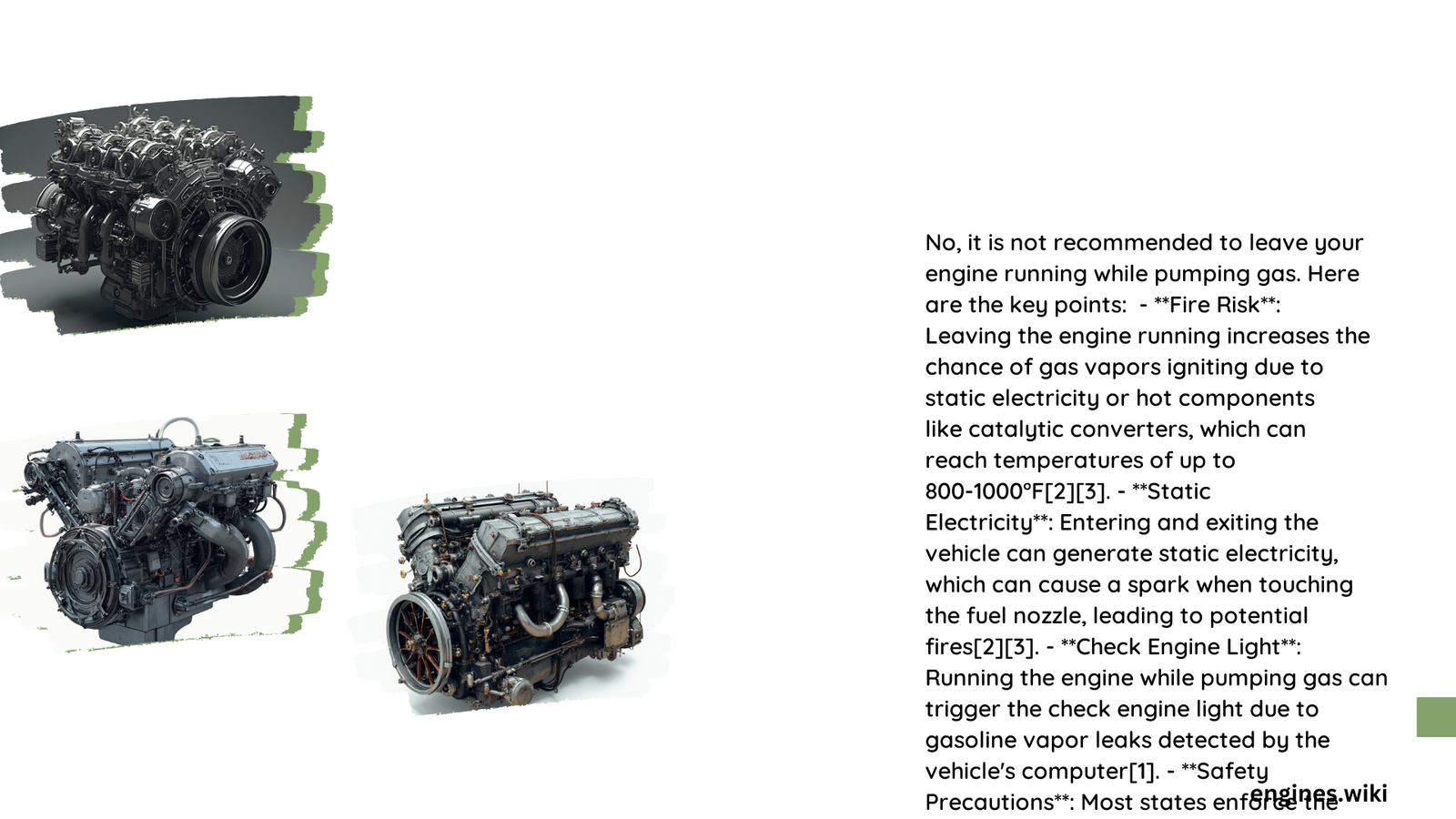Leaving your engine running while pumping gas is a potentially dangerous practice that can lead to serious safety risks, legal consequences, and potential fire hazards. Numerous state regulations, fire safety codes, and expert recommendations strongly advise against this practice, emphasizing the importance of turning off your vehicle’s engine during refueling to prevent potential accidents and static electricity-related incidents.
What Are the Immediate Risks of Running an Engine During Fuel Pump?
Pumping gas with your engine running creates multiple hazardous scenarios that can compromise personal and environmental safety. The primary risks include:
- Fire Hazard Potential
- Static electricity buildup
- Potential spark generation
-
Proximity to flammable gasoline vapors
-
Temperature-Related Risks
- Hot engine components
- Catalytic converter temperatures reaching 800-1000°F
- Increased combustion risk near fuel sources
How Serious Are the Potential Consequences?
| Risk Category | Potential Outcome | Probability |
|---|---|---|
| Fire Incident | Vehicle damage | Medium |
| Personal Injury | Burn risks | Low-Medium |
| Legal Penalties | Fines/Citations | High |
| Insurance Impact | Potential claim rejection | Medium |
Why Do Experts Recommend Turning Off Your Engine?

Automotive and fire safety professionals unanimously recommend shutting down your vehicle during refueling for several critical reasons:
- Static Electricity Management
- Reduces spark generation risks
- Prevents potential ignition of fuel vapors
-
Minimizes electrical discharge potential
-
Regulatory Compliance
- Adheres to International Fire Code standards
- Meets state-specific fuel safety regulations
- Avoids potential legal complications
What Specific Actions Should You Take While Refueling?
To ensure maximum safety during fuel pump operations, follow these precise guidelines:
- Complete stop vehicle
- Turn off engine completely
- Remove key from ignition
- Ground yourself before touching fuel nozzle
- Avoid re-entering vehicle during fueling
- Discharge static electricity if necessary
Are There Documented Statistics Supporting These Recommendations?
The Petroleum Equipment Institute provides compelling evidence:
- Approximately 4,150 gas station fires reported annually
- Nearly 50% of investigated incidents involved static electricity
- Significant risk during vehicle entry/exit during refueling
What Legal Implications Exist?
Most jurisdictions have explicit regulations:
– Fines ranging from $100-$500
– Potential citation for safety code violation
– Possible increased insurance premiums
Technical Perspective on Engine and Fuel Interaction
From an engineering standpoint, running an engine near fuel introduces unnecessary variables:
– Increased heat generation
– Potential electrical system complications
– Higher risk of unexpected spark generation
Recommended Best Practices
✅ Always turn off engine
✅ Remove keys from ignition
✅ Stay near fuel pump
✅ Avoid using electronic devices
✅ Ground yourself before touching nozzle
What If You Have Special Circumstances?
For vehicles with unique requirements:
– Consult vehicle manual
– Contact manufacturer support
– Seek professional guidance for specific scenarios
Final Safety Reminder
Never compromise safety for convenience. Turning off your engine takes seconds but can prevent potentially catastrophic incidents.
